
A pentagram (sometimes known as a pentalpha or pentangle or, more formally, as a star pentagon) is the shape of a five-pointed star drawn with five straight strokes. The word pentagram comes from the Greek word πεντάγραμμον (pentagrammon), a noun form of πεντάγραμμος (pentagrammos) or πεντέγραμμος (pentegrammos), a word meaning roughly “five-lined” or “five lines”, from πέντε (pente), “five” + γραμμή (grammē), “line”.
Pentagrams were used symbolically in ancient Greece and Babylonia, and are used today as a symbol of faith by many Wiccans, akin to the use of the cross by Christians and the Star of David by Jews. The pentagram has magical associations, and many people who practice Neopagan faiths wear jewelry incorporating the symbol. Christians once more commonly used the pentagram to represent the five wounds of Jesus. The pentagram has associations with Freemasonry and is also utilized by other belief systems.
Early History
Sumer
The first known uses of the pentagram are found in Mesopotamian writings dating to about 3000 BC. The Sumerian pentagrams served as pictograms for the word “UB” meaning “corner, angle, nook; a small room, cavity, hole; pitfall,” suggesting something very similar to the pentemychos (see below on the Pythagorean use for what pentemychos means). In René Labat’s index system of Sumerian hieroglyphs/pictograms it is shown with two points up. In the Babylonian context, the edges of the pentagram were probably orientations: forward, backward, left, right, and “above”.These directions also had an astrological meaning, representing the five planets Jupiter, Mercury, Mars and Saturn, and Venus as the “Queen of Heaven” (Ishtar) above.
An inverted pentagram can be found behind Rotwang’s creation, the Maschinenmensch (Maria).
– Metropolis (1927)
European Occultism
Heinrich Cornelius Agrippa and others perpetuated the popularity of the pentagram as a magic symbol, keeping the Pythagorean attributions of elements to the five points. By the mid-19th century a further distinction had developed amongst occultists regarding the pentagram’s orientation. With a single point upwards it depicted spirit presiding over the four elements of matter, and was essentially “good”. However, the influential writer Eliphas Levi called it evil whenever the symbol appeared the other way up.
“A reversed pentagram, with two points projecting upwards, is a symbol of evil and attracts sinister forces because it overturns the proper order of things and demonstrates the triumph of matter over spirit. It is the goat of lust attacking the heavens with its horns, a sign execrated by initiates.
Joss Whedon embeds the inverted pentagram via Captain America’s shield
– The Avengers (2012)
“The flaming star, which, when turned upside down, is the hierolgyphic [sic] sign of the goat of Black Magic, whose head may be drawn in the star, the two horns at the top, the ears to the right and left, the beard at the bottom. It is the sign of antagonism and fatality. It is the goat of lust attacking the heavens with its horns.”“Let us keep the figure of the Five-pointed Star always upright, with the topmost triangle pointing to heaven, for it is the seat of wisdom, and if the figure is reversed, perversion and evil will be the result.”
Satanism
Satanists use a pentagram with two points up, often inscribed in a double circle, with the head of a goat inside the pentagram. This is referred to as the Sigil of Baphomet. They use it much the same way as the Pythagoreans, as Tartaros literally translates from Greek as a “Pit” or “Void” in Christian terminology (the word is used as such in the Bible, referring to the place where the fallen angels are fettered). The Pythagorean Greek letters are most often replaced by the Hebrew letters לויתן forming the name Leviathan. Less esoteric LaVeyan Satanists use it as a sign of rebellion or religious identification, the three downward points symbolising rejection of the holy Trinity.
Inverted Pentagram is featured in the background of the Ouija Board
– Paranormal Activity (2009)
Thelema
Aleister Crowley also made use of the pentagram and in his Thelemic system of magick: an adverse or inverted pentagram represents the descent of spirit into matter, according to the interpretation of Lon Milo DuQuette. Crowley contradicted his old comrades in the Hermetic Order of the Golden Dawn, who following Levi considered this orientation of the symbol evil and associated it with the triumph of matter over spirit.
An inverted pentagram is displayed on the floor of the Russian Umbrella Corporation’s elevator.
– Resident Evil: Retribution (2012)
Other Organizations
Order of the Eastern Star
The Order of the Eastern Star, an organization associated with Freemasonry, has employed a point-down pentagram as its symbol, with the five isosceles triangles of the points colored red, blue, yellow, white and green. This is an older form of the order’s emblem and it is now more commonly depicted with the central pentagon rotated 36° so that it is no longer strictly a pentagram.
FURTHER READING

2010’s
2013
2012
2011
2010
2000’s
2009
2008
2007
2006
2005
2004
2003
2002
1990’s
1999
1998
1997
1993
1992
1990
1980’s
1989
1987
1986
1985
1984
1982
1980
1970’s
1977
1976
1975
1960’s
1968
1930’s
1939
1920’s
1927

The Sigil of Baphomet is the official insignium of the Church of Satan. It is also a symbol that is used by several other organizations, usually those associated with Satanism and the Left-Hand Path.
The squatting Hebrew letters at each of the points of the pentagram read “לִוְיָתָן” starting from the lowest point and reading counter-clockwise. Translated, this is Leviathan (LVIThN), a sea creature that originated from Judaic mythology. The image of Leviathan has many complex meanings, many of which apply to its use in the Sigil of Baphomet, most notably because Leviathan is commonly associated with Satan in Christian beliefs. This symbol originally had no connection to Satan, Christianity or the devil until the Spanish Inquisition, when any pagan symbol, religion, or practice was considered “The Devil’s Work”.
Although versions of the Sigil of Baphomet appear as early as the 1897 book La Clef de la Magie Noire by Stanislas de Guaita, the variant in common use by the Church of Satan is known as the Hell’s Kitchen Baphomet, a slightly modified version of an original which appeared on the cover Maurice Bessy’s 1964 book A Pictorial History of Magic and the Supernatural. This design created by Bessy was inspired by the Oswald Wirth Baphomet design created in 1930. The Church of Satan Baphomet, according to the CoS, is copyrighted and cannot legally be reproduced without their permission in conjunction with the Church of Satan name. However, historic versions are in the public domain, many of which are virtually identical to the one employed by the Church of Satan.
The Sigil of Baphomet featured in the dark occult re-imagining of Sherlock Holmes
– Sherlock Holmes (2009)
In an interview with Wikinews, High Priest Peter H. Gilmore described the meaning of the symbol:The goat face represents carnality. In ancient Egypt goats were considered representations as god symbols of lust, and we think lust is an important factor of biology that keeps humanity going so we value that. The five-pointed star really comes from the Pythagoreans. That is the one figure in which every element is within the golden mean of each other. It’s this wonderful mathematical symbol of perfection, organic perfection specifically. Since we are organic life and enjoy the idea of perfecting ourselves, that star is right for us in there and it perfectly fits the goat head inside. Now around it are two circles, one at the tip of the points of the star and one outside. In that are Hebrew characters starting at the bottom and going counter-clockwise spelling Leviathan. In Hebrew mythology, Leviathan was the great dragon of the abyss, this powerful earthly figure that even Yahweh was afraid of. So all these things taken together creates a symbol that Anton LaVey identified with Satanism specifically. When he started the Church of Satan, usually upside down crosses were considered Satanic, and he saw that these different elements and felt this was a positive symbol you could tie to the Satanism he was creating.
FURTHER READING

2000’s
2009

The terms Left-Hand Path and Right-Hand Path refer to a dichotomy between two opposing philosophies found in the Western Esoteric Tradition, which itself covers various groups involved in the occult and ceremonial magic. In some definitions, the Left-Hand Path is equated with malicious Black Magic and the Right-Hand Path with benevolent White Magic. Other occultists have criticised this definition, believing that the Left-Right dichotomy refers merely to different kinds of working, and does not necessarily connote good or bad magical actions.
In more recent definitions, which base themselves on the terms’ origins amongst Indian Tantra, the Right-Hand Path, or RHP, is seen as a definition for those magical groups which follow specific ethical codes and adopt social convention, while the Left-Hand Path adopts the opposite attitude, espousing the breaking of taboo and the abandoning of set morality. Some contemporary occultists have stressed that both paths can be followed by a magical practitioner, as essentially they have the same goals.
Rotwang’s mechanical right hand indicates he follows the Left-Hand Path
– Metropolis (1927)
Terminology
There is no set accepted definition of what comprises the Left-Hand Path and what comprises the Right. Early proponents of the terms, such as Madame Blavatsky, believed that they were essentially conflatable with Black Magic and White, although this has been criticised by later occultists as being overly simplistic.
The Right-Hand Path
The Right-Hand Path is commonly thought to refer to magical or religious groups which adhere to a certain set of characteristics:
- They adhere to social conventions and avoid taboos.
- They divide the concepts of mind, body and spirit into three separate, albeit interrelated entities.
- They adhere to a specific moral code and a belief in some form of judgement, such as karma or the Threefold Law.
Esoteric groups that could be considered to be RHP include Theosophy, as well as various Neopagan religions such as Druidry, Wicca, Kemetism, Celtic Neopaganism, Slavic Neopaganism, Germanic Neopaganism, Nova Roma, Hellenic Neopaganism and the Rada cult of Haitian Vodou, most of Thelema, and certain traditions of the Ecclesia Gnostica Catholica, or the Gnostic Catholic Church. Right-Hand Path Tantra (Sanskrit: Dakshinachara) is also included. The occultists Dion Fortune and William G. Gray consider non-magical Abrahamic religions to be RHP, although the term is rarely used outside of magical societies such as Fraternity of the Inner Light and Ordo Templi Orientis. Other RHP traditions include most of Taoism, Hinduism, Buddhism, Shinto, and all other Dharmic religions. Many groups and beliefs of the New Age Movement, particularly those based on self-help psychology, consciousness research, and many traditional religions and doctrines can also be considered RHP.
The Left-Hand Path
The historian Dave Evans studied self-professed followers of the Left-Hand Path in the early 21st century, making several observations about their practices:
- They often reject societal convention and the status quo, which some suggest is in a search for spiritual freedom. As a part of this, LHP followers embrace magical techniques that would traditionally be viewed as taboo, for instance using sex magic or embracing Satanic imagery. As Mogg Morgan wrote, the “breaking of taboos makes magick more potent and can lead to reintegration and liberation, [for example] the eating of meat in a vegetarian community can have the same liberating effect as anal intercourse in a sexually inhibited straight society.”
- They often question religious or moral dogma, instead adhering to forms of personal anarchism.
- They often embrace sexuality and incorporate it into magical ritual.
Under these definitions, various esoteric groups, often with widely differing beliefs, could be considered to be followers of the LHP. These include various forms of Satanism, such as LaVeyan Satanism as well as Theistic Satanism. Other Western LHP philosophies include Setianism, the Typhonian Order, Luciferianism, some beliefs of the New Age movement, chaos magic, Feri, magicians involved with demonology, as well as groups like the Dragon Rouge, and the Order of Nine Angles. The Petwo cult of Haitian Vodou reflects the LHP ethos. Several eastern philosophies could also be viewed as adhering to the LHP including forms of Taoism, forms of Hinduism such as Aghoris and Vamachara, forms of Buddhism like the Drukpa Lineage and Bön.
Darth Vader (who has taken the Left-Hand Path) cuts off Luke’s right-hand, symbolizing his descent down the Left-Hand Path
– Star Wars – Episode V: The Empire Strikes Back (1980)
History of the terms
Tantra and Madame Blavatsky
The occidental use of the terms Left-Hand Path and Right Hand-Path originated with Madame Blavatsky, a 19th century occultist who founded Theosophy. She had travelled across parts of southern Asia and claimed to have met with many mystics and magical practitioners in India and Tibet. She developed the term Left-Hand Path as a translation of the term Vama-marga, an Indian Tantric practice that emphasised the breaking of Hindu societal taboos by having sexual intercourse in ritual, drinking alcohol, eating meat and assembling in graveyards, as a part of the spiritual practice. The term Vama-marga literally meant “the left-hand way” in Sanskrit, and it was from this that Blavatsky first coined the term.
Returning to Europe, Blavatsky began using the term. It was relatively easy for her to associate left with evil in many European countries, where it already had an association with many negative things; as the historian Dave Evans noted, homosexuals were referred to as “left-handed” whilst in Protestant nations, Roman Catholics were called “left-footers”. This association with negative aspects of society can be traced back to the Bible, in which it states:
- And he shall separate them one from another,
- as a shepherd divideth his sheep from the goats.
- And he shall set the sheep on his right,
- but the goats on his left.
- — Matthew 25: 32-33
Adoption into the western esoteric tradition
In New York, Madame Blavatsky founded the Theosophical Society with several other people in 1875. She set about writing several books, including Isis Unveiled (1877) in which she introduced the terms Left-Hand Path and Right-Hand Path, firmly stating that she herself followed the RHP, and that followers of the LHP were practitioners of Black Magic who were a threat to society. Soon, certain other occultists soon picked up on her newly introduced duality, which, according to historian Dave Evans, “had not been known before” in the Western Esoteric Tradition. For instance, Dion Fortune, the founder of the esoteric magical group, the Society of the Inner Light also took the side of the RHP, making the claim that “black magicians”, or followers of the LHP, were homosexuals and that Indian servants might use malicious magical rites devoted to the goddess Kali against their European masters.
Aleister Crowley further altered and popularized the term in certain occult circles, referring to a “Brother of the Left-Hand Path,” or a “Black Brother,” as one who failed to attain the grade of Magister Templi in Crowley’s system of ceremonial magic. Crowley also referred to the Left-Hand Path when describing the point at which the Adeptus Exemptus (such as his old Christian mentor, Macgregor Mathers) chooses to cross the Abyss, which is the location of Choronzon and the illusory eleventh Sephira, which is Da’ath or Knowledge. In this example, the adept must surrender all, including the guidance of his Holy Guardian Angel, and leap into the Abyss. If his accumulated Karma is sufficient, and if he has been utterly thorough in his own self-destruction, he becomes a “babe of the abyss,” arising as a Star in the Crowleyan system. On the other hand, if he retains some fragment of ego, or if he fears to cross, he then becomes encysted. The layers of his self, which he could have shed in the Abyss, ossify around him. He is then titled a “Brother of the Left-Hand Path,” who will eventually be broken up and disintegrated against his will, since he failed to choose voluntary disintegration. Crowley associated all this with “Mary, a blasphemy against BABALON,” and with the celibacy of Christian clergy.
Another of those figures that Fortune considered to be a follower of the LHP was Arthur Edward Waite, who did not recognise these terms, and acknowledged that they were newly introduced and that in any case he believed the terms LHP and RHP to be distinct from Black and White Magic. However, despite Waite’s attempts to distinguish the two, the equation of the LHP with Black Magic was propagated more widely in the fiction of Dennis Wheatley, Wheatley also conflated the two with Satanism and also the political ideology of communism, which he viewed as a threat to traditional British society. In one of his novels, Strange Conflict (1941), he stated that:
“The Order of the Left-Hand Path… has its adepts… the Way of Darkness is perpetuated in the horrible Voodoo cult which had its origins in Madagascar and has held Africa, the Dark Continent, in its grip for centuries.”
Luke chooses the ‘Right-Hand Path’ after the realization that he will become his father, the Dark Lord of the Sith;
symbolized by his mechanical right hand
– Star Wars – Episode VI: Return of the Jedi (1983)
Later 20th and 21st centuries
In the latter half of the 20th century various groups arose that self-professedly described themselves as LHP, but did not consider themselves as following Black Magic. In 1975, Cults of the Shadow was published, in which the books’ author, Kenneth Grant, a student of Aleister Crowley’s, explained how he and his group, the Typhonian Order, practiced the LHP. Grant took the term back to its roots amongst eastern Tantra, stating that it was about challenging taboos, but that it should be used in conjunction with the RHP to achieve balance.
When Anton Szandor LaVey was developing his form of LaVeyan Satanism during the 1960s, he emphasised the rejection of traditional Christian morality and as such labelled his new philosophy to be a form of the Left-Hand Path. In his The Satanic Bible, he wrote that “Satanism is not a white light religion; it is a religion of the flesh, the mundane, the carnal – all of which are ruled by Satan, the personification of the Left Hand Path”.

2000’s
2005
1980’s
1983
1980
1920’s
1927
First Published: Dec 10, 2011 – Last Updated: May 7, 2014







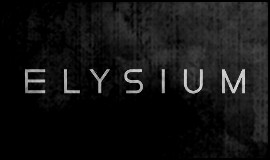


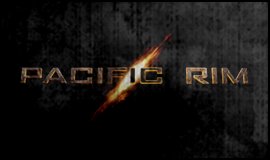





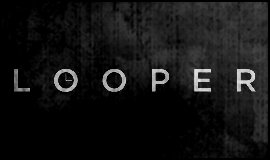




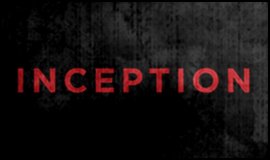


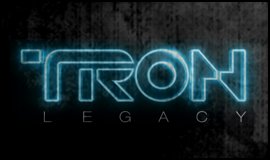

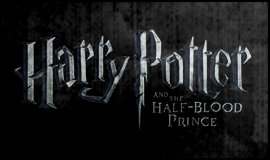







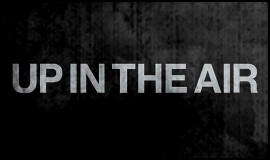








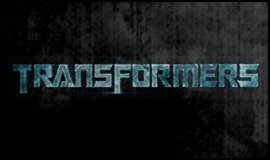




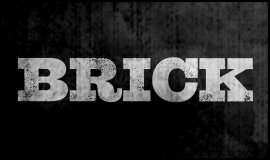

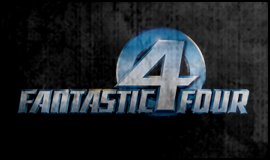


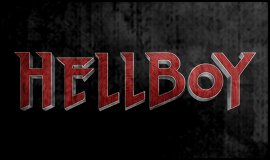

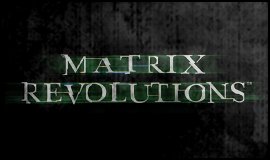







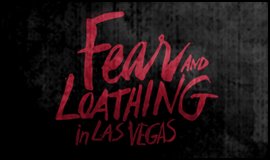









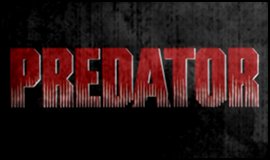

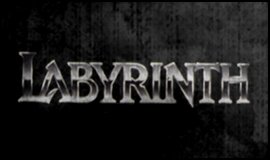
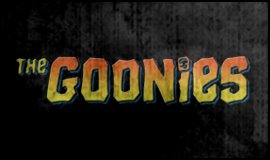


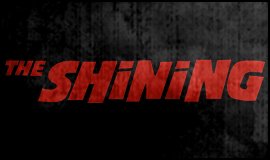
















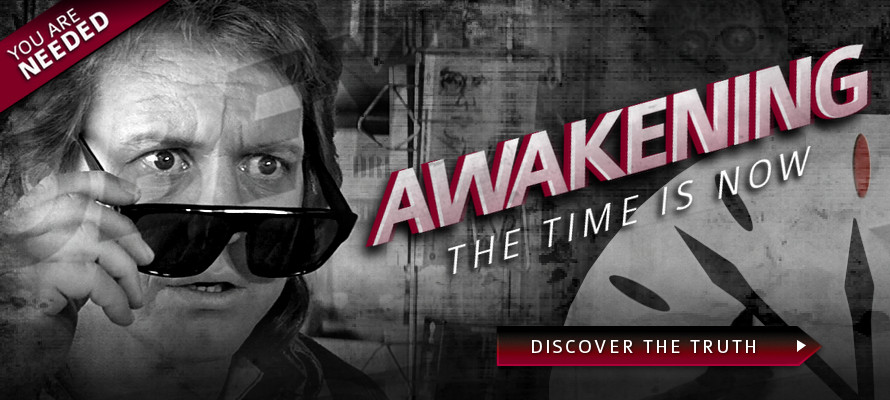
You must be logged in to post a comment.